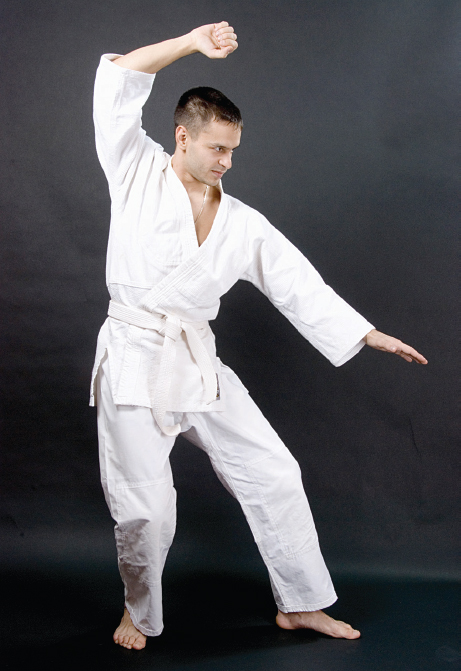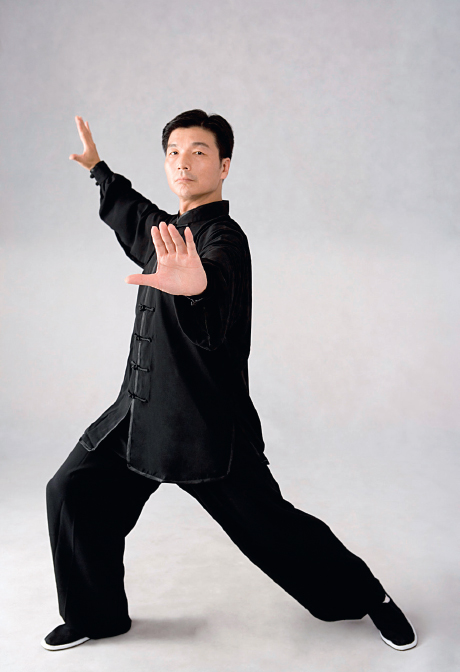Student Essay: Jacob Griffin, Karate Kid vs. Kung Fu Panda: A Race to the Olympics
Student Jacob Griffin compares and contrasts karate and kung fu, asking which of the two deserves to be the first declared an Olympic sport.
1
 Why do you think the writer raises this issue here?
Why do you think the writer raises this issue here?
About three decades ago, the first Karate Kid waxed on and off, kicking his way into the American sports scene. During the same era, martial arts movies with stars like Jackie Chan began to popularize kung fu with American audiences. Films such as the Karate Kid trilogy were instant classics, while kung fu has appeared in Kill Bill, the Matrix movies, and even the animated Kung Fu Panda. Despite the worldwide popularity of both fighting styles, neither has yet been approved for Olympic competition. The International Olympic Committee should consider which of these styles first deserves to be declared an official Olympic sport.
2
Besides their shared status in movies and popular culture, these two fighting styles are similar because each is an umbrella term for several different variations. The World Karate Federation includes four styles on its official list, while hundreds of kung fu categories are based on types of movement, locations of origin, and specific characteristics. Additionally, both fighting styles promote more than just the physical development of those who practice the art. Neither has combat as its only end. Humility, virtue, and courtesy are all important values in the philosophy of karate, just as the kung fu idea of qi, or ch’i, expresses the life energy inside practitioners. Each emphasizes spiritual growth as well as physical strength and stamina.
3
Although both fighting styles have found success in Western pop culture and have encouraged the inner growth of practitioners, karate is the younger of the two. Karate developed on the island chain between China and Japan, where Okinawa, Japan, is today. Given the regional politics, geography, and trade routes, Chinese martial arts probably traveled to Okinawa in the 14th century and then merged with the local fighting system known as te. In contrast, kung fu is a popular term for many Chinese martial arts, including hand-to-hand combat and wrestling that date back to the 5th century BC. But, despite this long history, it wasn’t until the founding of the People’s Republic of China in 1949 that kung fu became a national activity with training manuals, academies, and exams. Given kung fu’s ancient roots, karate could be considered an offshoot of Chinese martial arts.
4
The techniques for each fighting style are also different. Although both use linear and circular movements, karate is usually considered to be more linear than kung fu. This difference means that karate tends to have more straight lines and more direct punches, strikes, and kicks in its sequences. Daniel’s crane kick in the first Karate Kid film, in which his leg shoots right out in front of him, is the perfect example of karate’s directness. This characteristic style might have been developed by the king’s bodyguards in Okinawa so that they could take quick control of a contest and fend off multiple attackers. Now the style remains most evident in the short, distinct sets of moves that practitioners must learn and then apply in competition.
 What other differences between martial arts come to mind? Which matter most?
What other differences between martial arts come to mind? Which matter most?
5
In contrast, kung fu is better known for being circular, rather than linear, especially in its hand movements. While just as powerful as karate movements, kung fu’s more fluid motions draw their strength from centrifugal° force, as opposed to a direct hit. The movements learned by kung fu practitioners also have more of a flow to them than those in karate, and they tend to be longer, more complicated sets of moves. For these reasons, karate is often considered “hard” and kung fu “soft,” although the many kung fu variations have both hard and soft qualities, blurring such distinctions.
6
Finally, karate and kung fu practitioners wear different uniforms and use different weapons. The traditional karate uniform is white with a white kimono top over which a belt is tied. The color of the belt changes with the practitioner’s rank, from white, yellow, and orange in the beginning stages, all the way up to purple, brown, and the famous black belt given to instructors. Karate is also practiced barefoot. When weapons are used in karate, they include the bo staff, a long stick up to six feet, and the nunchaku, two shorter sticks connected by a chain.


7
In contrast, kung fu practitioners may wear a greater variety of uniforms. Their outfits can be black or bold colors (like blue, red, or gold) and made of fabrics such as silk or satin. The tops of kung fu uniforms feature Chinese “frog” buttons, unlike karate’s overlapping kimono-style jacket. Colored sashes may be worn as belts are in karate, but this practice of showing rank appears mainly in North American kung fu schools. Kung fu practitioners wear shoes and may use hook swords, butterfly swords, or nine section whips as well as many other weapons.
8
 How do you think this question should be decided?
How do you think this question should be decided?
Because both karate and kung fu are now well established in Western pop culture, which of the two fighting styles deserves to be the first approved as an Olympic sport? Although karate has a rich heritage in Okinawa and Japan, the origins of kung fu stretch back even further and point to the influence of Chinese martial arts on karate as it developed. Furthermore, many more variations gather under the umbrella of kung fu than of karate. Kung fu’s movements are usually more connected and complex than karate’s shorter, more distinct sequences. Thus, if karate is actually an off-shoot of Chinese martial arts, perhaps kung fu deserves to claim Olympic status before karate does. And yet karate’s simplified approach—forever memorialized by Mr. Miyagi’s wax on, wax off teachings—might be more fit for an international stage.
Questions to Start You Thinking
Meaning
Question
oltkGH5af/+da4c+6g6VQ8GoMqUIxIoCMlRvyk0WbD0V8aQs7B5MeKDhFyI3RCdocdQj8QnpbDriocv2YHTCZdktO6MKVEpwPSIZuISAyEbLLd7dalVQYiRYkMkpIGzfQ8+uEaTOWLg3SXIUYEP7iq5WK7wqzzUL6H9/1l2zRiG9rSxmJATufTdUOFU+Zb6Do8f32nrkUgvaWMYsOXoR30n7Mo+E06MTN/8ttaEwbWnghWlnBNEdw6nZ2Nlje0r7Question
GaB6iYaYnt74VVcTuhxvjERDXz8pcZFzzGuAxaIruMcbPVXJTBU/Dkzmr7seIGQq63aWSA7UAu3RZFf+ZZbNDO1tXg9/YiNOTOuI0EocL2twU8tSmQVZMZDnhgBQS2cod+dK0mUAo6boqGVw/lZYXQ==Question
FlkeYDgdkNRIT8CgZ+1FMtkQceLmxHh9cFw27D1v8qpvvaQnmpN3V/p6C6RBMyqdvJmItS6nvZQBlmoDoAHCUrwyD2INbLu2rOzNphkT1Ac=
Writing Strategies
Question
yvtGq0csuZ4r/IBhIi0QKD5yVLuXd9/NCsq9/eEWgsorlHEfrya1CSl81M2sCpU7viAP4qKZ29ul2Sk85SFpesgBpBCpv4CZPJC1aVkglKglby24dStZH2P0zclXGVSqOsSin9MZcX8=Question
Y45/q3OvkjBiGBd9CXpY81U/PD2kbN8pLtgyOiDiE87Z/vjcobZPfEnwWLLTUondGQYazB2uBlCYv0/5INiF35HiyGT8Ue9XqUI+4QWe63/24HpPiJO1FtJ1a2qemxa6kSJbA/OULnVPaLXa0k+tJ3/28skxJpiuQuestion
sg7NlDYBEcUpJZrZNg4dhcl6/aW5D1U5kquogRnIMfgq8dPhjnKvRreF8hSz5vKYumRgu3KA1dOLABI0FSyR+Q/GKZ9gebq3MBeDucIASjYhBgFvQuestion
1W/nxdgmUczJY7QlboLow1GT3lIBQlY6ilXgZp77vGTrVqgifZRCwrY2efKySx4xch7WrMmCeJN9sn6MsVpjrYyNtdiIT662XItWid6HyXwUG2AQNWZCSAHSg69CCz7Kl+9AkpVpjBk06Gneo8O01VqAaotaISAQbCyWPHhIHO4z7T3BujjRk9FLofi6/F6eYPVcqAYdcd1b7i+5HGSbA18K/9sUkYIlAu+Lz/9E6/dbPCi+UkV9r0nixuMb9bLbaQgMHN11Pnk/fFAw8Xr82r2ZlSDNV340Mqqakw==